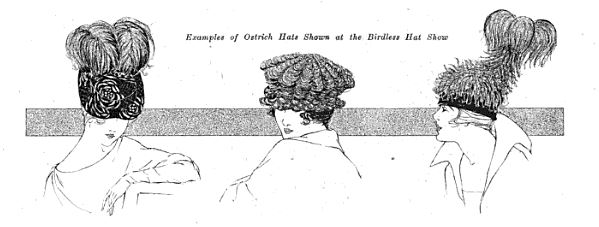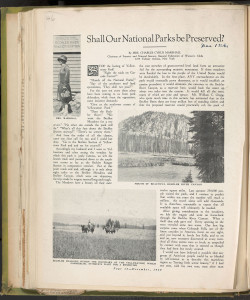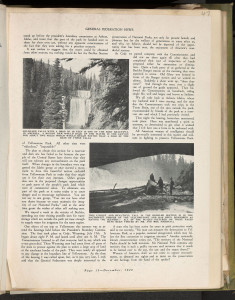As we’ve discussed in a previous post, women became an important force in early campaigns for wildlife protection, and in the early decades of the twentieth century more and more wives, mothers, and daughters joined the cause. One woman in particular, Mrs. Charles Cyrus Marshall, went above and beyond to provide bountiful aid wherever it was needed. Though most of Mrs. Marshall’s documented work with state and national preservation may have been created through local action, her projects most certainly had national and historical impact.
As a member of the New York State Federation of Women in 1915, she was instrumental in organizing the balloting process related to naming the bluebird as the unofficial (and later official) State Bird of New York.
Mrs. Marshall was also closely tied with efforts to preserve exotic birds through support of various state plumage bills. She and thousands of her fellow New York City Federation of Women’s Club members pooled their efforts to educate women about the pitfalls surrounding fowl fashion. Their creation and involvement in various Conservation Week celebrations provided both men and women a chance to learn more about deforestation, animal and plant habitats, national parks, and even water and air conservation. In her words, “Women will do much better work for conservation when they know more about it.”
Through her partnership with the Bronx County Chapter of the American Red Cross, she staged a faux plumage fashion show/ fundraiser, which cleverly highlighted stunning alternatives in embroidered and beaded featherless hats. Her ingenuity in staging such an event not only appealed to lovers of fashion, but subtly educated the city’s women of the ease at which one could survive a stylish promenade down 5th avenue without harming our nation’s wildlife.

Image from “Audubon Couldn’t Criticize these Hats” (review of the birdless hat show) in Millinery Trade Review, December 1917.
Volume 10 of William T. Hornaday’s scrapbook collection on the history of wildlife protection includes a lengthy article by Mrs. Marshall (by then Chairwoman of the Forestry & Natural Scenery Committee of the General Federation of Women’s Clubs) in which she discusses with great passion her recent visit to Yellowstone National Park and the importance of preserving other similar national expanses.
Mrs Cyrus Marshall. “Shall Our National Parks be Preserved?” In Hornaday Wildlife Scrapbook Collection, Vol. 10. WCS Archives Collection 1007.Both the bounties of nature and her attendance at the nearby President’s Boundary Commission hearing were eye-opening and inspiring. At the hearing, she spoke frankly about her Federation’s interest in park preservation and remarked about the gathering afterwards with much animation: “Here was manifested a spirit so insistent, so determined to get what it wanted that I felt here was a force to be reckoned with.” Just a few paragraphs later, she pleads with her fellow wives, daughters, and mothers to finally realize that it’s truly everyone’s responsibility to maintain our nation’s beauty, no matter how small the effort:
Women of America, shall we not unite to oppose encroachments, to demand our rights and to insist on the preservation of our heritage from the hand of the spoiler?Mrs. Marshall’s tireless efforts for national preservation would continue for years to come. Ever since her visit to Yellowstone, her love for parks never ceased. A crusade to educate citizens on the wonder and rarity of Yellowstone’s mass of breathtaking geysers and geyser basins as well as the creation of a memorial forest honoring Stephen T. Mather, long-standing National Parks Service Director, are among her many honorable achievements.
This post is by Janine Veazue, MLIS, who worked during Summer 2013 with the WCS Archives as a Metadata Cataloger on our Hornaday Wildlife Protection Campaign Scrapbook Project.
In addition to serving as the first director of the Bronx Zoo, William T. Hornaday (1854-1937) was a pioneering force in the American wildlife conservation movement, and he spearheaded several lobbying and fundraising campaigns in support of wildlife. These campaigns he documented in scrapbooks, and the WCS Archives is now engaged in making many of these scrapbooks available online through the generous support of the Leon Levy Foundation. These scrapbooks are expected to be online in February 2014. In the meantime, posts like this one provide a preview, as well as some backstory, into the scrapbooks’ contents.


